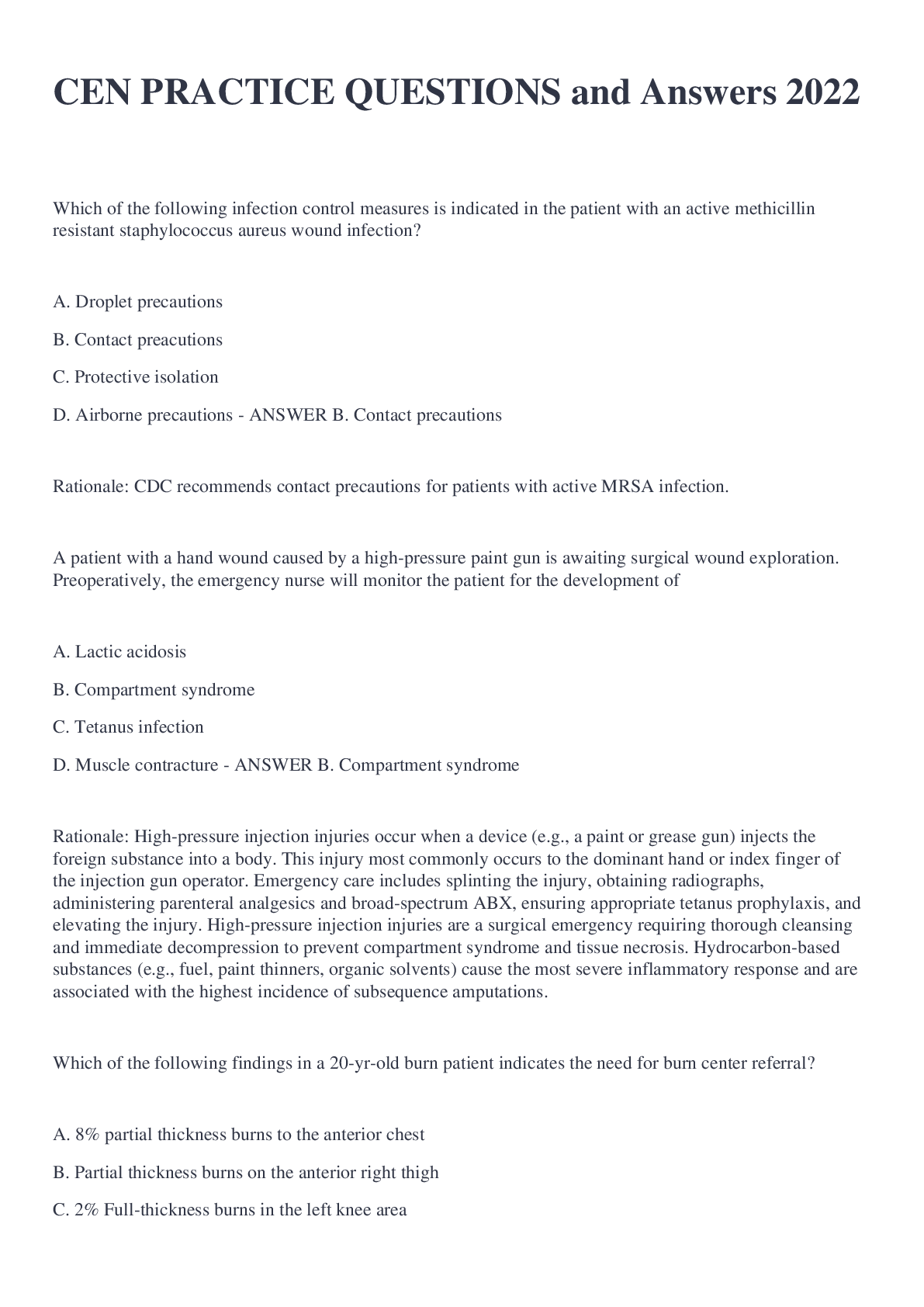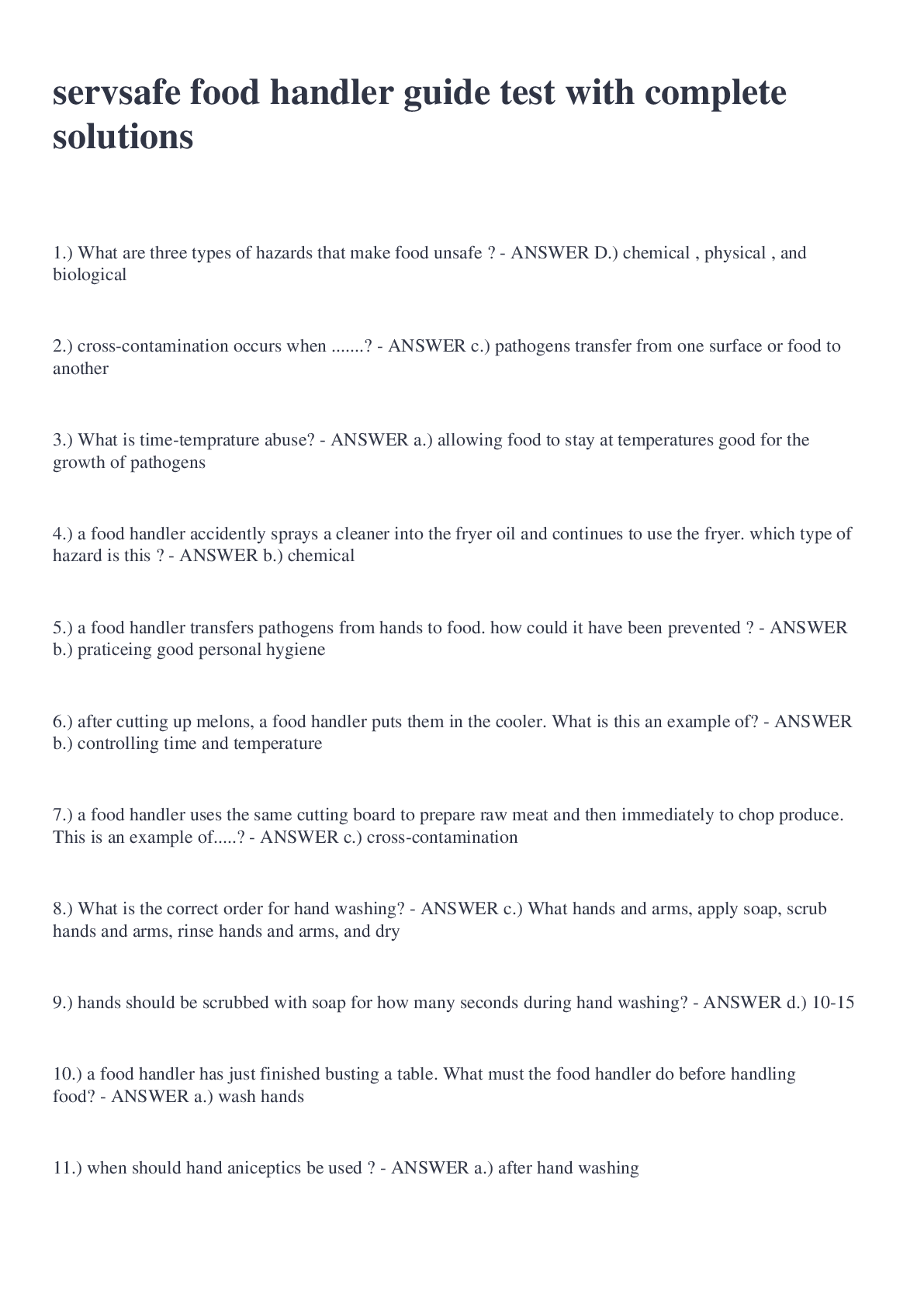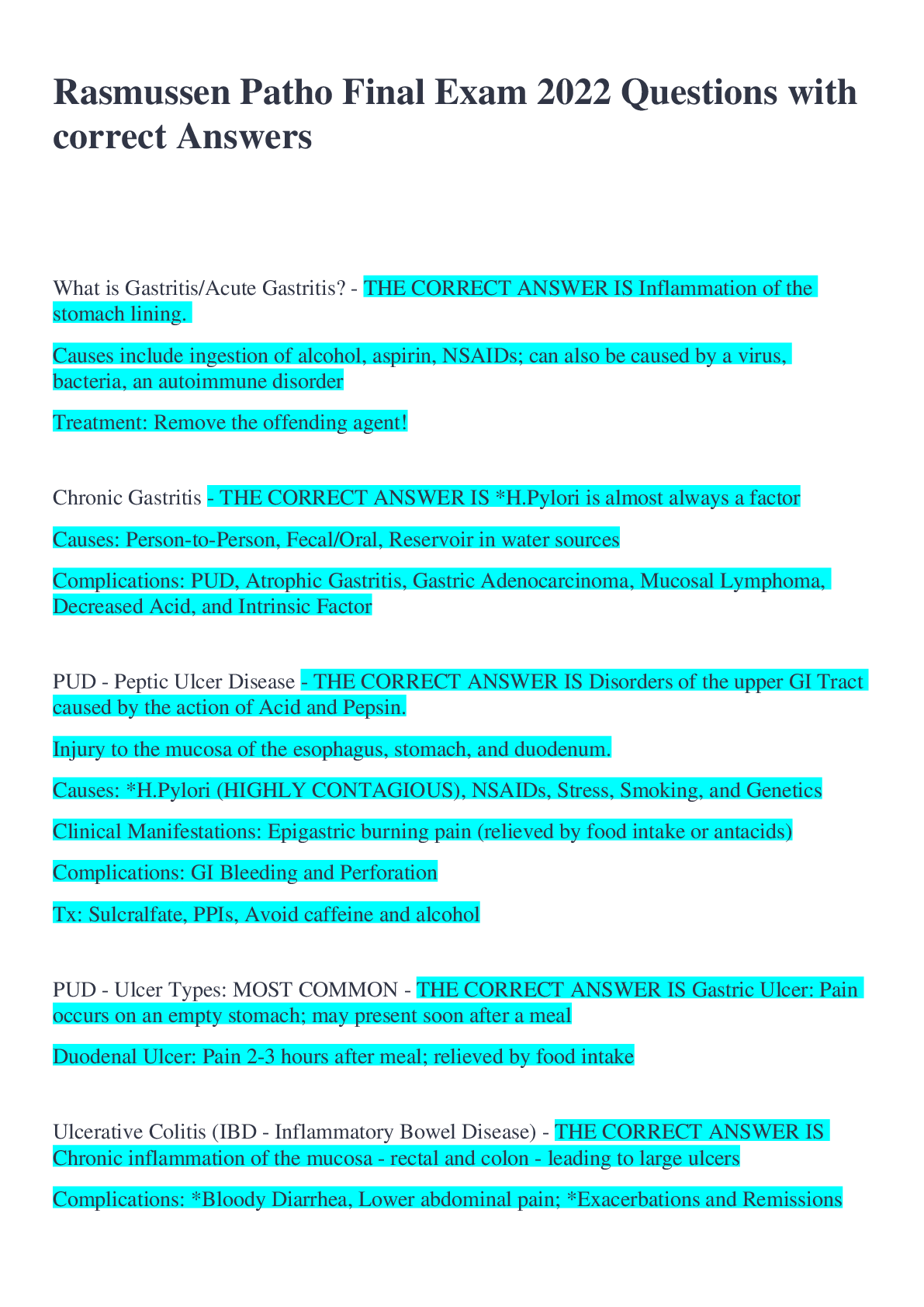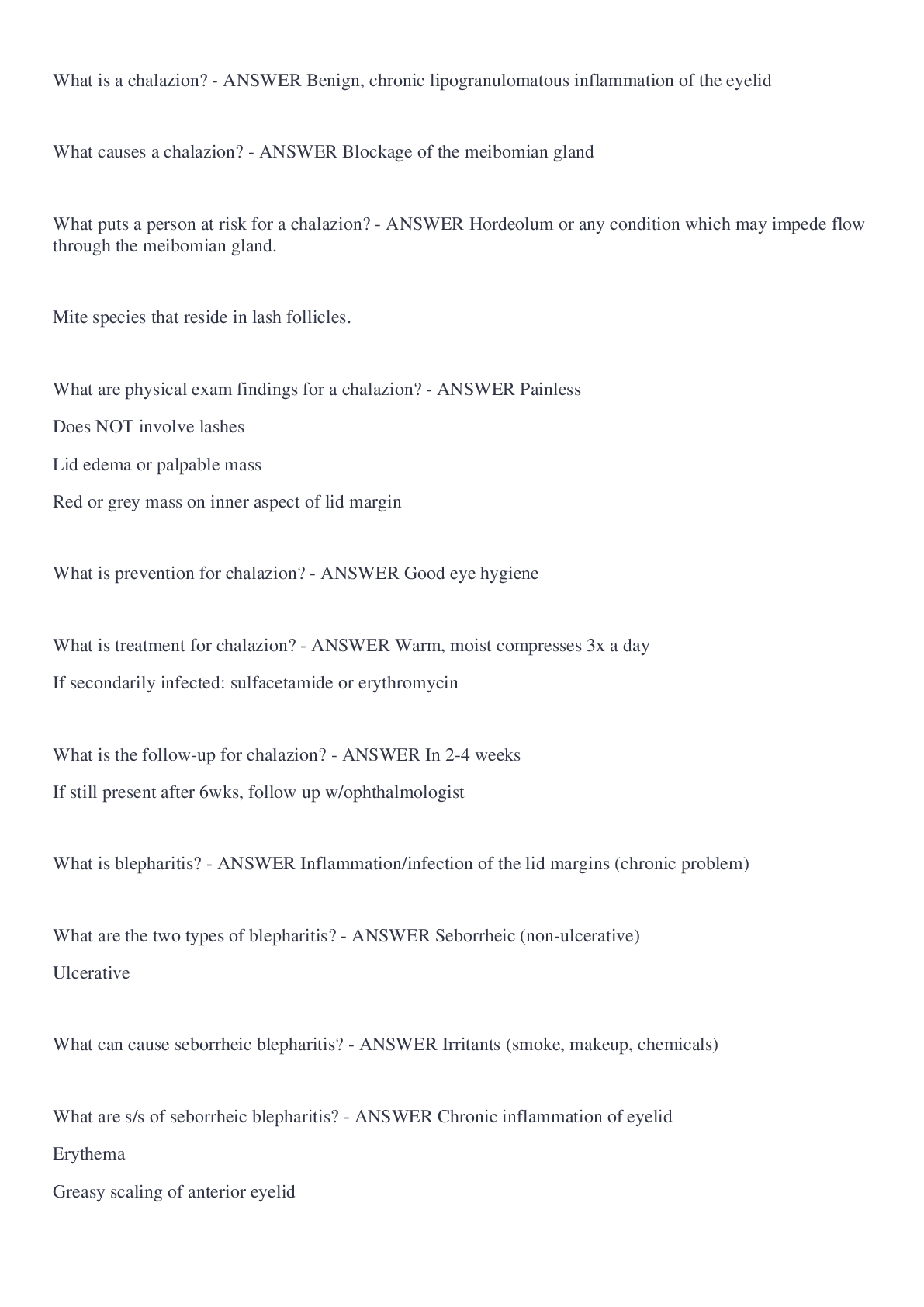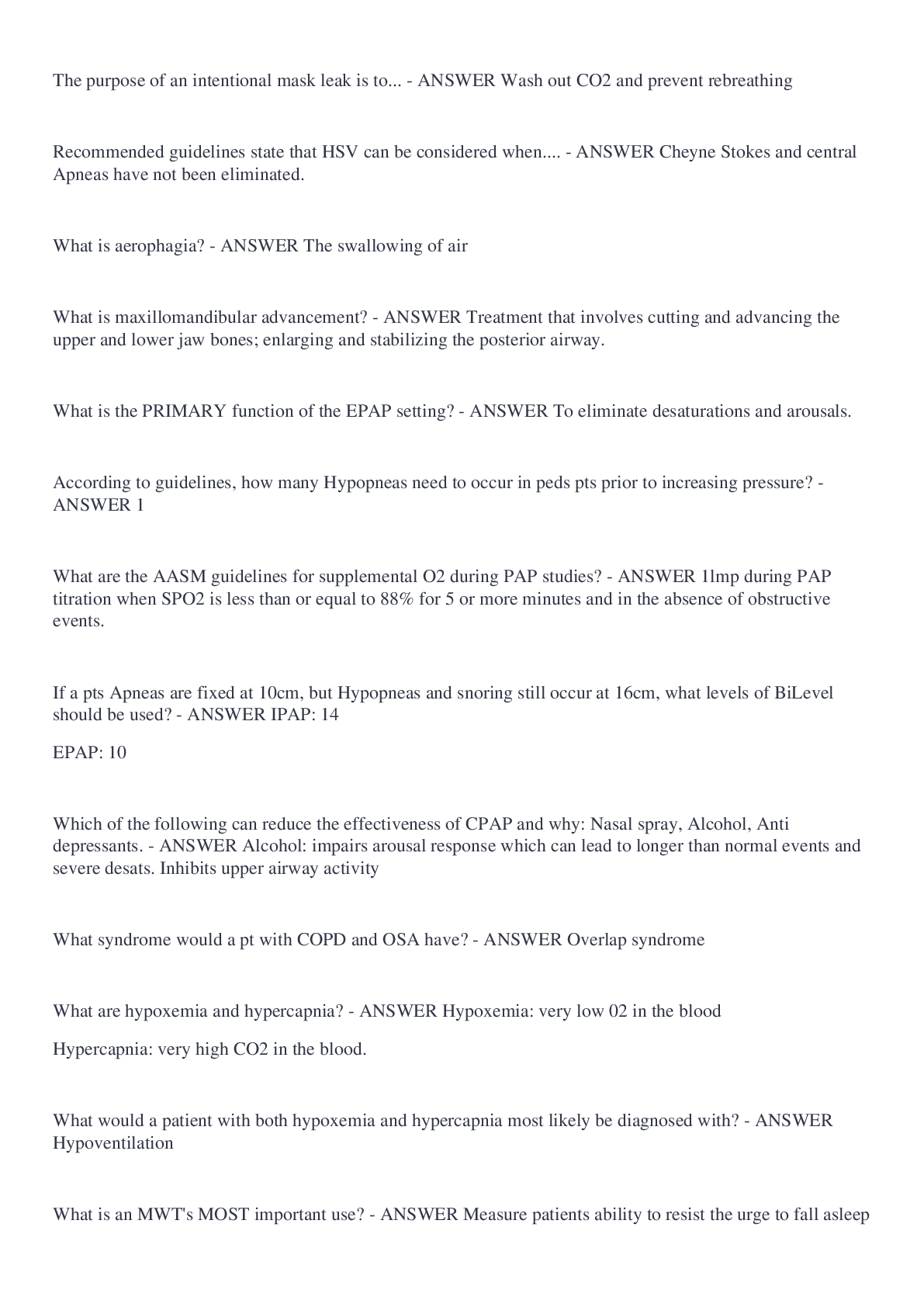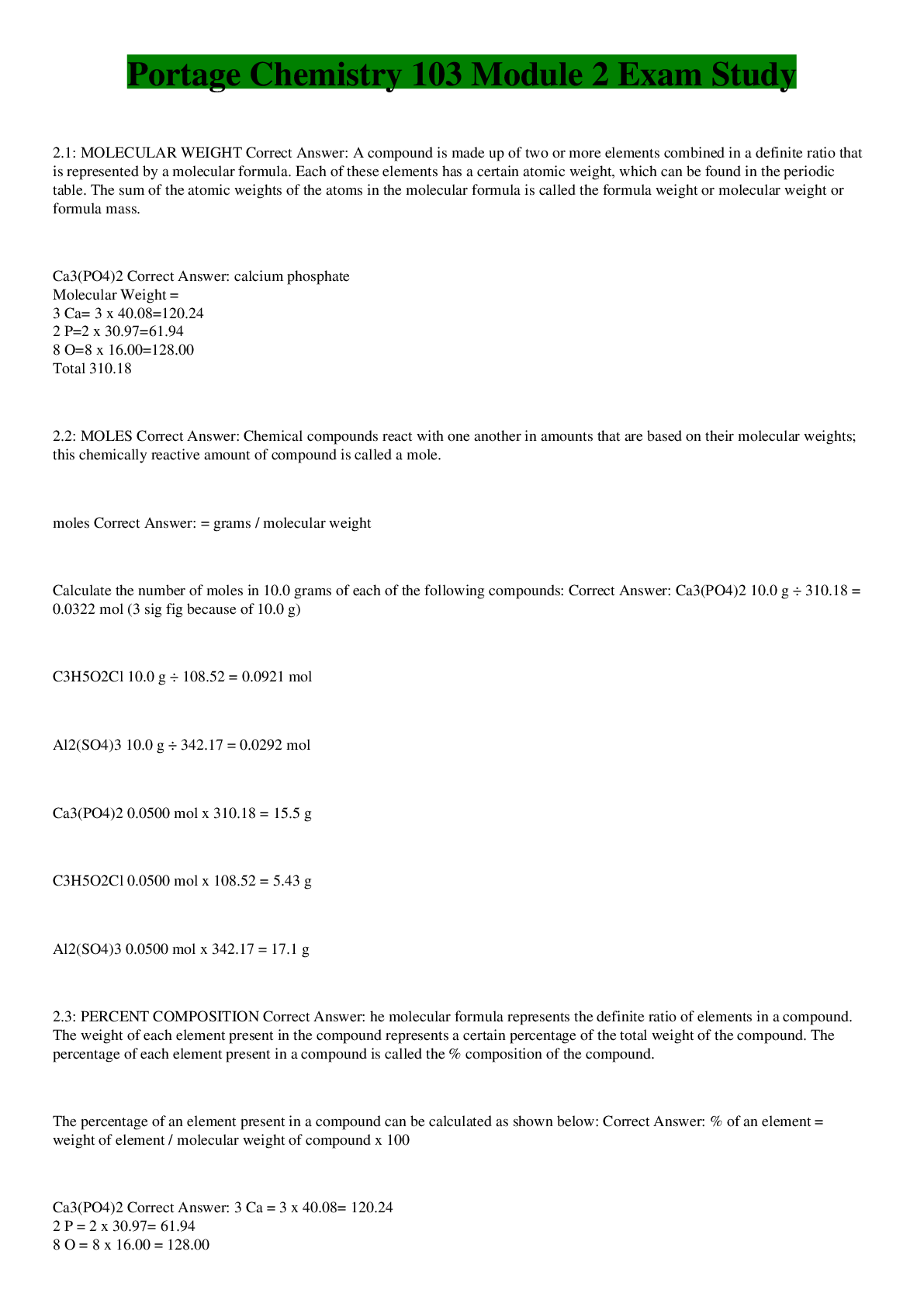Portage Chemistry 103 Module 2 Exam Study 2022/2023 Graded A+
Document Content and Description Below
2.1: MOLECULAR WEIGHT - ANSWER A compound is made up of two or more elements combined in a definite ratio that is represented by a molecular formula. Each of these elements has a certain atomic weight... , which can be found in the periodic table. The sum of the atomic weights of the atoms in the molecular formula is called the formula weight or molecular weight or formula mass. Ca3(PO4)2 - ANSWER calcium phosphate Molecular Weight = 3 Ca= 3 x 40.08=120.24 2 P=2 x 30.97=61.94 8 O=8 x 16.00=128.00 Total 310.18 2.2: MOLES - ANSWER Chemical compounds react with one another in amounts that are based on their molecular weights; this chemically reactive amount of compound is called a mole. moles - ANSWER = grams / molecular weight Calculate the number of moles in 10.0 grams of each of the following compounds: - ANSWER Ca3(PO4)2 10.0 g ÷ 310.18 = 0.0322 mol (3 sig fig because of 10.0 g) C3H5O2Cl 10.0 g ÷ 108.52 = 0.0921 mol Al2(SO4)3 10.0 g ÷ 342.17 = 0.0292 mol Ca3(PO4)2 0.0500 mol x 310.18 = 15.5 g C3H5O2Cl 0.0500 mol x 108.52 = 5.43 g Al2(SO4)3 0.0500 mol x 342.17 = 17.1 g 2.3: PERCENT COMPOSITION - ANSWER he molecular formula represents the definite ratio of elements in a compound. The weight of each element present in the compound represents a certain percentage of the total weight of the compound. The percentage of each element present in a compound is called the % composition of the compound. The percentage of an element present in a compound can be calculated as shown below: - ANSWER % of an element = weight of element / molecular weight of compound x 100 Ca3(PO4)2 - ANSWER 3 Ca = 3 x 40.08= 120.24 2 P = 2 x 30.97= 61.94 8 O = 8 x 16.00 = 128.00 310.18 % Ca = (120.24 ÷ 310.18) x 100 = 38.76% %P = (61.94 ÷ 310.18) x 100 = 19.97% %O = (128.00 ÷ 310.18) x 100 = 41.27% 2.4: EMPIRICAL FORMULA - ANSWER If the formula of a compound is known, the % composition of the compound can be determined. This process can be done in reverse: The formula of the compound can be determined if the % of each element present in the compound is known. The formula calculated from % composition is known as the empirical formula (or the simplest formula). The actual molecular formula is some multiple of this simplest formula, which is determined by knowing the molecular weight. To determine the empirical formula: - ANSWER (1) Divide each element % by its exact atomic weight to give a set of numbers. (2) Divide the smallest of this set of decimal numbers into each of the numbers (including itself) to yield a second set of numbers. (3a) Round off each of the second set of decimal numbers to a whole number. OR (3b) If the numbers derived from the division in step 2 are recognized as exact decimal equivalents of fractions (such as n.25 = 1/4, n.333 = 1/3, n.5 = 1/2, n.666 = 2/3, n.75 = 3/4), multiply all of the numbers derived by division by the denominator of the recognized fraction to give whole numbers. (4) Each whole number is the number of atoms of that element in the empirical formula. % Composition of a compound is: - ANSWER 32.37% Na; 32.37% Na ÷ 22.99 = 1.408 22.58%S; 22.58% S ÷ 32.07 = 0.704 (smallest number of the set) 45.05% O; 45.05% O ÷ 16.00 = 2.816 0.704 is the smallest of this set of numbers, so it is divided into each of the set of numbers. Na = 1.408 ÷ 0.704 = 2 Na S = 0.704 ÷ 0.704 = 1 S O = 2.816 ÷ 0.704 = 4 O Na2SO4 2.5: BALANCING CHEMICAL EQUATIONS - ANSWER When certain chemical materials are added to one another, they undergo a chemical reaction in which the atoms of the materials separate from one another and recombine in a new way to form new materials. This chemical reaction can be described by a chemical reaction equation in which the reactants (starting materials) are written on the left side of the equation and the products (final materials) are written on the right side of the equation, separated by an arrow which points from left to right (some sites use an equals sign here but this is incorrect because the only thing equal about this equation is the number of atoms, once balanced), an example of which is shown below: NaOH + HCl → NaCl + H2O The reaction equation is read as follows: Sodium hydroxide + Hydrochloric acid YIELDS Sodium chloride + Water To balance a reaction equation, numbers (called coefficients) may be placed in front of each formula, but t [Show More]
Last updated: 1 year ago
Preview 1 out of 16 pages
Instant download
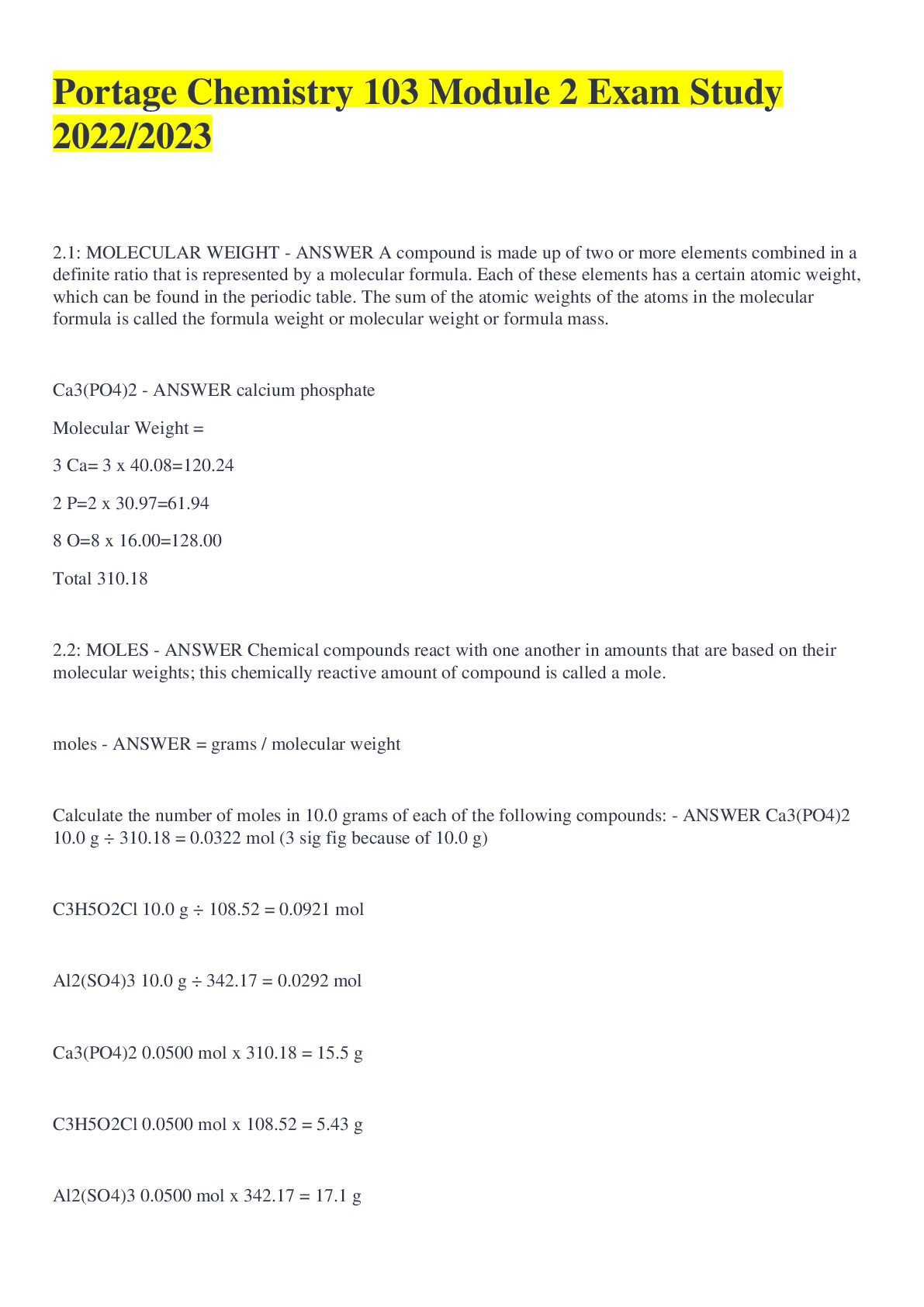
Buy this document to get the full access instantly
Instant Download Access after purchase
Add to cartInstant download
Reviews( 0 )
Document information
Connected school, study & course
About the document
Uploaded On
Aug 16, 2022
Number of pages
16
Written in
Additional information
This document has been written for:
Uploaded
Aug 16, 2022
Downloads
0
Views
62

